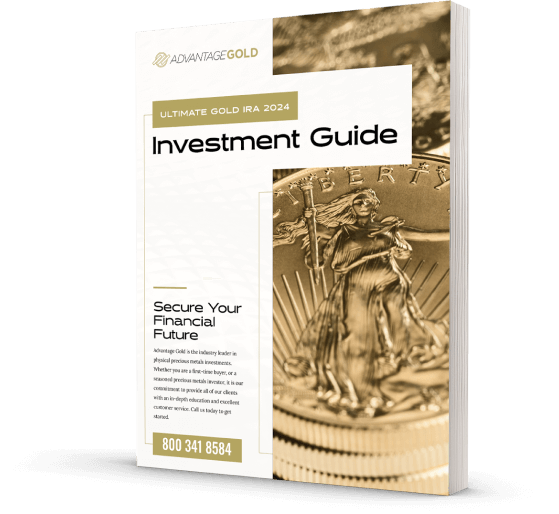
The phrase “tariffs impact on gold” refers to the relationship between government-imposed trade restrictions and gold prices. When countries impose tariffs on imports or exports, they create trade tensions that lead to inflation, supply chain disruptions, and market volatility. Investors often seek refuge in gold during these uncertain times, causing prices to rise. Historically, whenever global trade policies become unpredictable, gold has proven to be a valuable asset for preserving wealth.
A tariff is a tax imposed on imported or exported goods, meant to protect domestic industries or generate government revenue. However, tariffs can also increase costs for businesses and consumers, making everyday goods more expensive. When tariffs are introduced, trade disputes often follow, leading to economic slowdowns and inflationary pressures.
For example, the U.S.-China trade war in 2018-2019 led to major disruptions in supply chains, causing uncertainty in stock markets. During this time, gold prices rose from $1,280 per ounce in early 2018 to over $1,500 per ounce by mid-2019, as investors moved away from volatile assets. When tariffs lead to higher inflation, gold becomes more attractive because it retains value even as paper currency loses purchasing power.
History has shown that whenever tariffs create economic instability, gold prices tend to rise. During the Great Depression, the Smoot-Hawley Tariff Act of 1930 imposed high taxes on imports, worsening global trade conditions. As a result, stock markets collapsed, and investors sought safe-haven assets like gold.
Similarly, in 2018, the U.S. imposed tariffs on steel and aluminum imports, causing China, Canada, and the European Union to retaliate. The uncertainty caused by these policies led to a surge in gold demand, with prices increasing by more than 20% in two years.As history repeats itself, gold remains a go-to investment during trade conflicts, making it a powerful hedge against inflation and recession.

Investors flock to gold during trade wars because it is a stable, tangible asset that holds value when paper currencies weaken. Unlike stocks, which can crash due to market instability, gold maintains its worth because of its limited supply and universal demand.
Another reason gold thrives in tariff-driven economies is due to currency devaluation. When countries engage in trade disputes, their currencies often weaken, making gold more attractive. During the 2018 U.S.-China trade war, the Chinese yuan dropped to its lowest level in over a decade, making gold a preferred store of value for global investors.
Central banks worldwide increase their gold holdings during economic uncertainty. In 2023 alone, global central banks purchased over 1,000 metric tons of gold, signaling that even governments see gold as a critical asset during volatile economic conditions.
One of the biggest concerns surrounding tariffs is their effect on inflation. When a country imposes tariffs, businesses pass the increased costs onto consumers, leading to higher prices for everyday goods. This inflation erodes the purchasing power of paper money, causing investors to look for assets that store value over time—like gold.
Gold is often referred to as an inflation hedge, meaning its value typically rises when the cost of living increases. A prime example of this was in the 1970s, when inflation in the U.S. soared due to oil crises and economic instability. Gold prices skyrocketed from $35 per ounce in 1971 to $850 per ounce by 1980, proving its effectiveness in inflationary environments.
Tariffs also slow down economic growth by disrupting global trade and increasing business costs. As companies struggle with higher tariffs, they may cut jobs, reduce investments, or shift production overseas, leading to uncertainty in financial markets. This uncertainty benefits gold, as investors seek refuge in stable assets during turbulent times.
Tariffs often trigger currency fluctuations, which further impact gold prices. When a government imposes tariffs, it can cause its national currency to weaken due to reduced trade activity. As a result, gold—priced in U.S. dollars—becomes more expensive in weaker currencies, increasing global demand.
Just this year, when the U.S. imposed 25% tariffs on Canada and Mexico, both the Canadian dollar and Mexican peso fell against the U.S. dollar. This devaluation made gold an even more attractive investment.
Central banks also play a key role in shaping gold prices during trade disputes. When trade wars weaken economies, central banks tend to increase gold reserves to stabilize financial systems. Countries like China, Russia, and India have consistently increased their gold holdings in response to global economic instability, further driving up prices.
For investors looking to protect their wealth during periods of trade instability, diversifying with gold is a smart move. One of the best ways to invest in gold is through a Gold IRA, which allows individuals to hold physical gold in their retirement accounts. Unlike stocks and bonds, which are vulnerable to market fluctuations, gold IRAs provide long-term stability.
Investors should also consider dollar-cost averaging, which involves buying gold in regular intervals to reduce the impact of market volatility. By spreading out purchases over time, investors can take advantage of price dips while building a solid gold portfolio.
With tariffs continuing to shape global trade policies, gold remains one of the most reliable assets for protecting wealth. As history has shown, tariffs create inflation, slow economic growth, and lead to currency devaluation—all of which drive investors toward gold. By incorporating gold IRAs into their portfolios, investors can safeguard their financial future against the uncertainties of global trade wars.
For over 11 years, Advantage Gold has been helping investors secure their wealth through precious metals investing. As a trusted leader in the industry, Advantage Gold provides education, guidance, and expert advice on the best ways to protect retirement savings with gold IRAs. Learn more at AdvantageGold.com and start investing in gold today.

Please note that Advantage Gold and its representatives are not licensed or registered investment advisers, attorneys, CPA’s or other financial service professionals. We do not offer or render any legal, tax, accounting, investment advice or professional services. Additionally be aware that precious metals carry risk of loss and are not a suitable investment for everyone. Past performance is not necessarily indicative of future results and you should always consult your financial and tax professional and carefully evaluate all risks associated with the acquisition of precious metals before making the investment.
The statements made on this website are opinions of Advantage Gold LLC. Past performance is not necessarily indicative of future results. Precious metals, Gold American Eagles, Proof Gold American Eagles, certified gold coins, as well as gold and silver bars carry risk and investing in precious metals directly or through an IRA is not suitable for all investors. Precious metals and coins (i.e. Canadian Gold Maples, Canadian Silver Maples, American Gold Eagles, American Silver Eagles, Proof Gold American Eagles, Proof Silver American Eagles, Certified Gold American Eagles, Numismatic Gold Coins) may appreciate, depreciate, or stay the same depending on a variety of factors. Precious metals can and will fluctuate unexpectedly. Advantage Gold cannot guarantee, and makes no representation, that any metals purchased (i.e. .999 gold bars, .9999 silver bars, or any gold coins) will appreciate at all or appreciate sufficiently to produce a profit above and beyond the mark up/ commissions charged whether they are bought for direct delivery or inside of a precious metals IRA. The decision to purchase or sell precious metals with cash or inside of a Gold IRA or a Gold Backed IRA, and which precious metals to purchase or sell, are the customer’s decision alone, and purchases and sales should be made subject to the customer’s own research, prudence and judgment. By accessing any Advantage Gold content, you agree to be bound by the terms of service. Review the terms of service and privacy policy.
*Consult your tax Advisor.